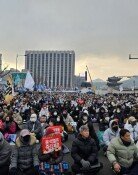Overnight Call Rate Hiked 25 Basis Points
Overnight Call Rate Hiked 25 Basis Points
Posted May. 08, 2002 09:20,
The short-term interest rate is hiked 0.25 percent points for the first time since eight months.
The Monetary Policy Committee (MPC) of the Bank of Korea (BOK) held a meeting on May 7 and decided to raise the overnight call interest rate from the current 4.0 percent to 4.25 percent during May. Accordingly it is expected the deposit and loan interest rates of financial institutions will rise, and the overheating in real estate market may be calm down a little bit.
The overnight call interest rate has been adjusted for the first time since when the rate is lowered 0.5 percent point from 4.5 percent at the U.S. terror crisis in September last year to prevent the slow down of economy.
BOK governor Park Seung explained, `A lot of money is floating as household loans increased rapidly due to the low interest rate,` and added, `We determined the interest rate should be adjusted a little bit higher to stabilize the commodity prices.`
BOK estimated that the aggregated currency (M₃) as of the end of March is 1,060 trillion Won overshooting the targeted range of increase rate of eight to twelve percents to reach the lower range of 13 percent. The increase rate (13 percent) of the aggregate currency compared to the same period last year is the highest in 34 months since June 1999.
Governor Park said, `The reason why we raised the interest rate when the U.S. economy is on shaky ground and the stock market is tumbling is because we want to take early preemptive measures since the currency and credit policy effects take place six months after the policy is launched,` and added, `In large perspective, 4.25 percent is the low interest rate, and the low interest trend for the economic recovery will be maintained for a foreseeable future.`
MPC forecasted the commodity price increase will be more prominent in the latter part of this year as the potential destabilizing factors such as international oil prices and real estate price hikes remain even though the recovery signs of economic indicators such as production, consumption, exports, and investment become more apparent.
Sang-Chul Kim sckim007@donga.com
Headline News
- Joint investigation headquarters asks Yoon to appear at the investigation office
- KDIC colonel: Cable ties and hoods to control NEC staff were prepared
- Results of real estate development diverged by accessibility to Gangnam
- New budget proposal reflecting Trump’s demand rejected
- Son Heung-min scores winning corner kick







